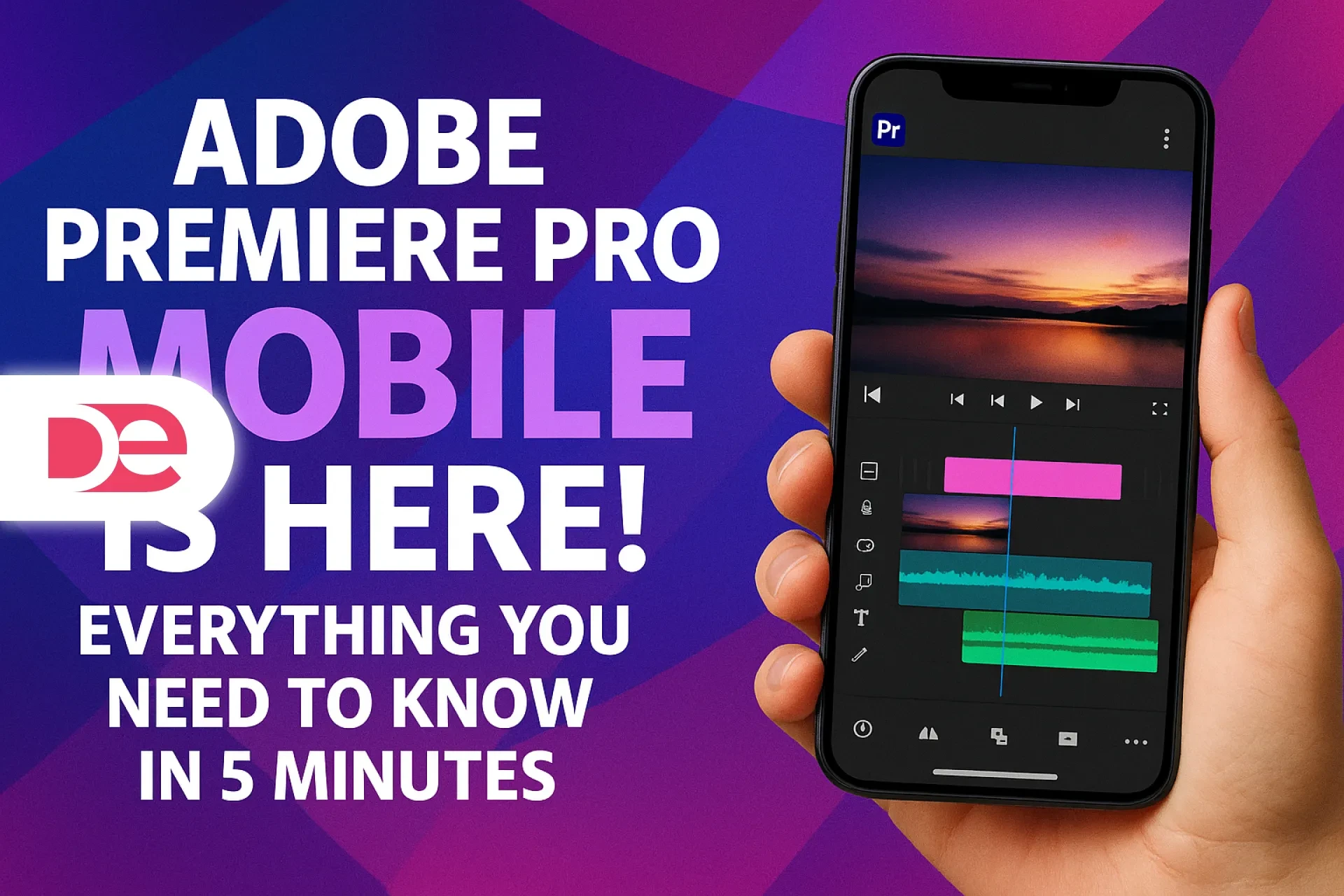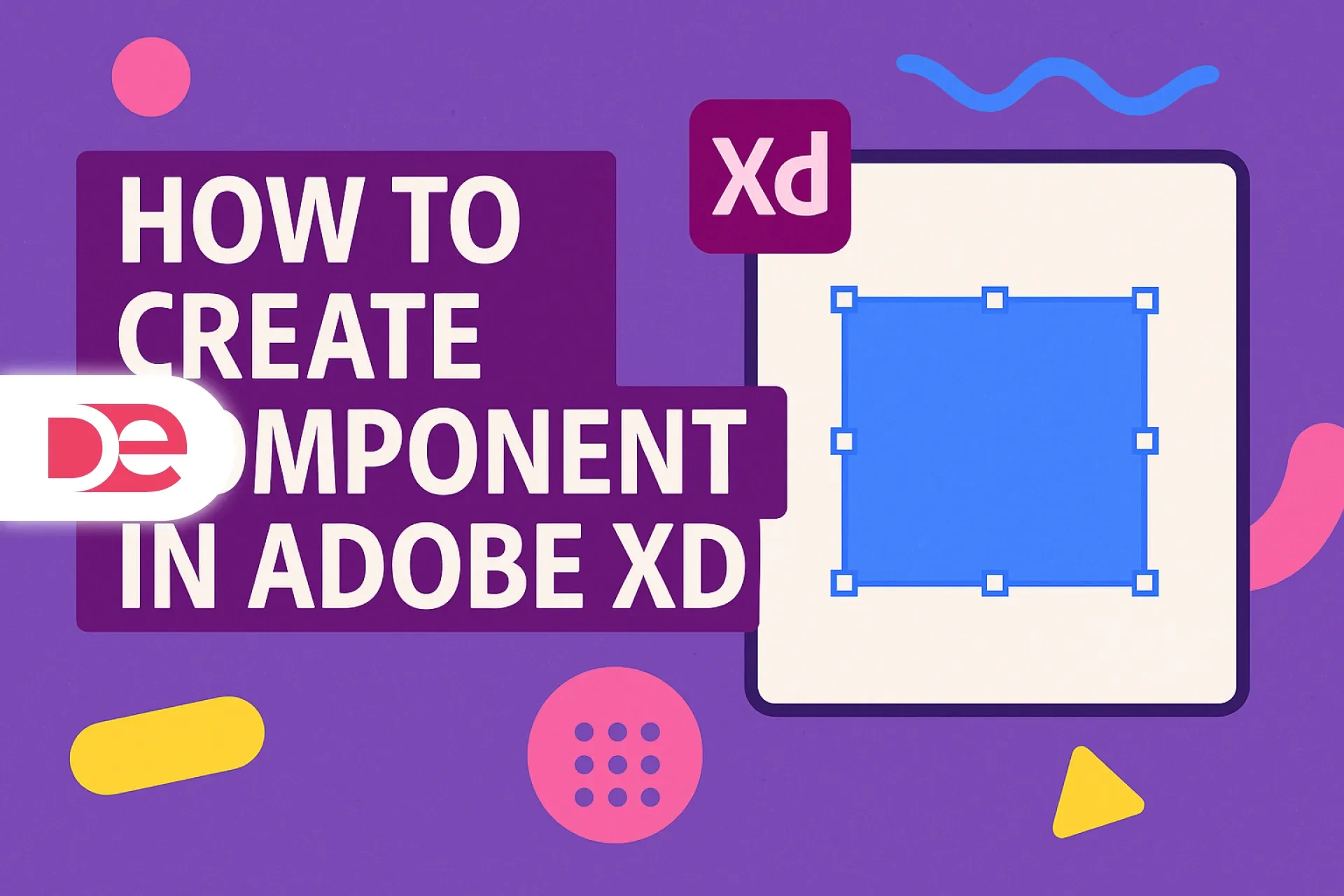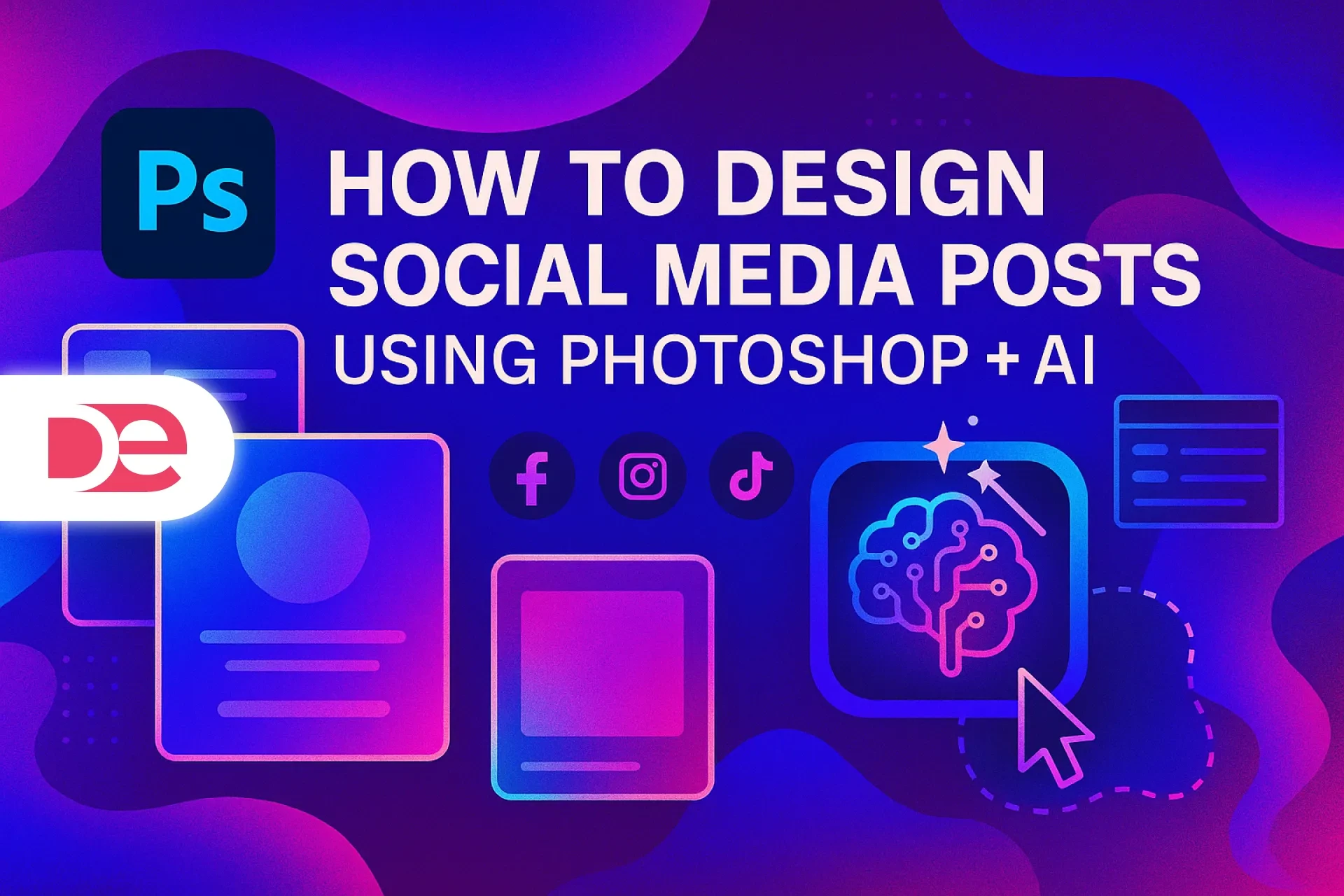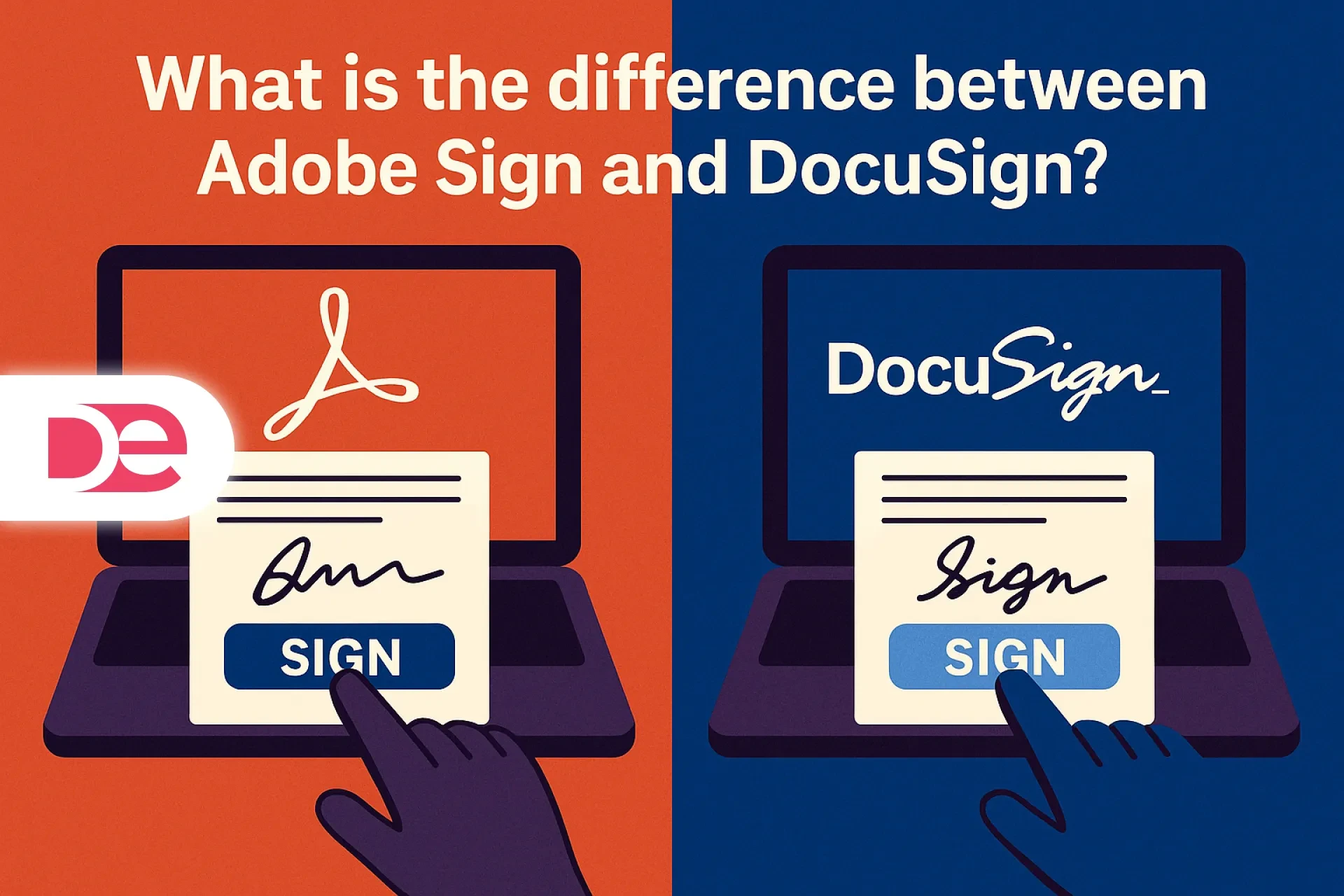Affiliate disclosure: This article contains affiliate links. If you click and purchase, we may earn a commission at no extra cost to you.
Table of Contents
You’re not imagining it: creative and communication skills now show up in job postings far beyond design majors. If you’re running a K–12 district, a community college, or a university—and you want students to present research, build portfolios, and communicate with impact—Adobe’s education lineup is built for that. The short answer to the question “Is there Adobe for education is a resounding yes. Adobe offers discounted Students & Teachers plans for individuals, institutional licensing for Schools & Universities, and Adobe Express for Education (free for K–12). Together, these options cover everything from lab deployments to browser-based creation with classroom-safe generative AI. (Adobe, 2025; Adobe, 2024).
Below, you’ll find a plain-English breakdown of the offers, what you actually get, how to deploy at scale, and how to avoid common pitfalls. If you’re ready to equip your school right now, you can start with this education-friendly link: Get Adobe for Education.
Get institution-ready licensing (Named User & Shared Device) with centralized admin.
Get Adobe for Schools & Universities
What “Adobe for Education” Actually Means
Students & Teachers (individual discount). If you’re an enrolled student (13+) or a teacher, you can purchase Creative Cloud Pro as an individual at a steep education discount. It includes 20+ apps (Photoshop, Illustrator, Premiere Pro, Acrobat Pro, and more) plus Adobe Firefly generative-AI features. Adobe renamed “All Apps” to Creative Cloud Pro in 2025 and updated pricing tiers; check current U.S. pricing and plan terms before you buy. (Adobe, 2025).
Schools & Universities (institutional licensing). Institutions can centrally manage licenses via the Adobe Admin Console and deploy either Named User Licensing (assigned to a person, ideal for faculty and students who use apps on multiple devices) or Shared Device Licensing (assigned to a lab/classroom computer, ideal for kiosks or VDI). Named User is the default model; Shared Device is designed specifically for labs. (Adobe, 2025).
Adobe Express for Education (K–12). For K–12, Adobe Express for Education is free and purpose-built for classrooms with privacy-first defaults and age-appropriate safeguards. It runs in the browser, reduces IT overhead, and includes classroom-safe generative AI and prebuilt activities. (Adobe, 2025; Adobe, 2024).
K–12 budget note. Adobe publicly highlights very low per-user school pricing for K–12 volume licensing (“from $5 per student or teacher per year,” minimums apply). Always confirm regional contracts and minimum purchase thresholds with Adobe or your reseller. (Adobe, 2025).
Why It Matters: Outcomes, Skills, and Real Campus Examples
Digital skills demand is rising. Labor-market data shows continued demand for digital creation and communication skills across non-IT roles, and 2025 projections continue to emphasize AI-adjacent and content skills. (Lightcast, 2024–2025).
Adobe tools are widely adopted in higher ed. Arizona State University and Rochester Institute of Technology expanded equitable access to Adobe Express and Creative Cloud for all students, with micro-credentials to showcase creative and data-viz skills. (Adobe, 2024).
Campus-wide access boosts digital literacy. At the University of Utah, students, faculty, and staff get Adobe Express and Creative Cloud, reinforcing communication and creativity outcomes across disciplines. (EdTech Magazine, 2025).
Design-adjacent software shows up in postings. Regional workforce analysis (2024) reports Adobe Illustrator among the most requested software skills in graphic-design postings, a signal that specific tool fluency remains marketable. (Regional CTE/Lightcast, 2024).
Eligibility & What You Get (Without the Jargon)
If you’re an individual student or teacher:
• Access the discounted Creative Cloud Pro plan with 20+ apps, cloud storage, and Firefly AI features. (Adobe, 2025).
• Verification of academic status is required at checkout. (Adobe, 2025).
If you represent a school, district, or university:
• Choose Named User (per-person) or Shared Device (per-device) licensing and manage everything in the Admin Console. (Adobe, 2025).
• For K–12, roll out Adobe Express for Education free to classrooms with classroom-safe AI defaults. (Adobe, 2024–2025).
About generative AI & student data:
• Adobe states it does not train Firefly on customers’ personal content; K–12 teacher and student projects are excluded from training by default. (Adobe, 2025; Adobe, 2025).
• For privacy and parent communications, Adobe maintains a K–12 Student Privacy hub. (Adobe, 2025).

Deploy Adobe Campus-Wide (Schools & Universities)
Centralize management in the Admin Console and choose Named User or Shared Device licensing for labs and classrooms.
Get It NowQuick Start: Step-by-Step (Students/Teachers and Institutions)
If you’re a student or teacher (10 minutes)
• Click Get Adobe for Education.
• Select the Students & Teachers option and complete academic verification. (Adobe, 2025).
• Install the Creative Cloud desktop app, then install your needed apps (Photoshop, Acrobat Pro, Premiere Pro, etc.).
If you’re an IT admin at a school or university (afternoon project, then ongoing)
• Decide on license models. Map personas (students, faculty, staff, labs) to Named User or Shared Device licensing. (Adobe, 2025).
• Set up identity and SSO. Configure the Admin Console with your IdP so users sign in with school credentials. (Adobe, 2025).
• Package and deploy apps. Use the Admin Console to create Shared Device or Named User packages, then push via your MDM/endpoint tools. (Adobe, 2025).
• Roll out Adobe Express for Education (K–12). Enable via school email domains and share class codes for quick onboarding. (Adobe, 2025).
• Train faculty. Start with Adobe Express templates, assignment workflows, and quick actions; then graduate to Premiere Pro, Illustrator, and Acrobat Pro essentials. (Adobe, 2024–2025).
Pricing & Licensing at a Glance (U.S., always verify current terms)
| Audience | Offer | What you get | Typical access | Notes |
|---|---|---|---|---|
| K–12 schools/districts | Adobe Express for Education | Free browser-based creation, templates, classroom-safe Firefly AI, class codes | Web + mobile | Free for K–12; privacy protections and Safe Search defaults. (Adobe, 2024–2025). |
| K–12 schools (volume) | Creative Cloud for K–12 | 20+ apps (Photoshop, Illustrator, Premiere Pro, Acrobat Pro), Admin Console | Named User or Shared Device | Public pages reference from $5 per user/year; minimum purchase applies. (Adobe, 2025). |
| Higher education | Creative Cloud for Higher Ed | Same 20+ apps + services, centralized management, updates | Named User + Shared Device (labs/VDI) | New lineup changes noted for Aug 2025; confirm contracts. (Adobe, 2025). |
| Individuals (student/teacher) | Creative Cloud Pro (Students & Teachers) | Discounted 20+ apps + Firefly features | Personal devices | Plan renamed in 2025; pricing tiers updated. (Adobe, 2025). |
Practical Example: How a University Scaled Creative Access
Consider a campus-wide deployment where every student, regardless of major, receives Adobe access. California State University reports that as an Adobe Creative Campus, all students, faculty, and staff can use Creative Cloud apps—including Adobe Express—to strengthen digital literacy and student agency across courses. This “access for all” model integrates creative communication into general education and discipline-specific classes, not just design programs. (Adobe, 2024).
K–12 analogs show similar momentum: back-to-school 2024 initiatives expanded equitable access at large publics like Arizona State University and RIT, pairing software access with micro-credentials students can show in portfolios and on LinkedIn. (Adobe, 2024).
Pros, Cons & Risk Management
Pros
• One ecosystem, many outcomes. 20+ pro apps plus Acrobat and Firefly AI cover video, design, docs, and content creation in one stack. (Adobe, 2025).
• Flexible deployment. Named User for roaming users; Shared Device for labs/VDI—both centrally managed. (Adobe, 2025).
• Classroom-safe AI for K–12. Firefly’s dataset is licensed/rights-aware, Safe Search defaults are enabled, and student/teacher projects are excluded from training. (Adobe, 2025).
• Evidence of real adoption. Documented campus-wide rollouts and workforce signals for Adobe skills. (EdTech Magazine, 2025; Lightcast, 2024–2025).
Cons (and how to mitigate them)
• Subscription budgeting. New 2025 plan changes and AI entitlements can affect costs; lock in education contracts and review entitlements annually. (Adobe, 2025).
• Hardware requirements. Creative apps need capable devices; use Shared Device Licensing for labs or leverage browser-based Adobe Express as a low-spec option. (Adobe, 2025).
• Faculty adoption curve. Offer short Adobe Express workshops and template-driven assignments before moving to advanced apps. (Adobe/ISTE, 2024).
• Privacy questions. Share the K–12 privacy page with families and clarify data-handling for AI. (Adobe, 2025).
Common Mistakes to Avoid (and Expert Tips)
Mistake 1: Buying individual licenses for lab computers.
• Use Shared Device Licensing for labs to stay compliant and simplify seat turnover. (Adobe, 2025).
Mistake 2: Skipping identity and SSO.
• Tie Adobe accounts to school credentials in the Admin Console to streamline provisioning and off-boarding. (Adobe, 2025).
Mistake 3: Rolling out apps without quick wins.
• Start with Adobe Express quick actions (remove background, resize, captions) and assignment templates to build confidence fast. (Adobe, 2024–2025).
Mistake 4: Ignoring portfolio and credentialing.
• Encourage students to publish projects and stack micro-credentials where available; some campuses tie Adobe projects to career-readiness badges. (Adobe, 2024).
Mistake 5: Not planning for 2025 lineup changes.
• Adobe has updated plan names/prices for individuals and noted higher-ed lineup changes in August 2025; reconfirm entitlements before renewals. (Adobe, 2025).
Step-By-Step Classroom Scenario (Mini Case Study)
Goal: First-year writing instructors want students to present research findings visually.
Plan:
• Use Adobe Express for Education to storyboard, generate safe images with Firefly, and assemble a one-minute explainer video directly in the browser. (Adobe, 2024–2025).
• Provide a branded template (department logo, color palette) so sections look consistent across cohorts.
• For students seeking depth, offer optional Illustrator charts and Premiere Pro fine-tuning in a staffed lab (Shared Device Licensing). (Adobe, 2025).
• Assess with a rubric that covers clarity, evidence, and citation—not just aesthetics.
Outcome: Faster production cycles, stronger audience engagement, and reusable assets for student portfolios and program marketing.
Frequently Asked Questions
Conclusion: Your Next Move
If you need fast, classroom-safe creation and career-relevant skills, Adobe’s education ecosystem checks the boxes—from free Adobe Express for Education in K–12 to institutional Creative Cloud for universities with lab deployments and SSO. The payoff is practical: clearer student communication, stronger portfolios, and skills employers recognize.
Ready to implement? Start here:
• K–12 leaders & higher-ed admins: Scope your license model (Named User vs Shared Device) and request institutional pricing. (Adobe, 2025).
• Students & teachers: Claim the discounted plan and begin creating today.
Equip Your School with Adobe →










































